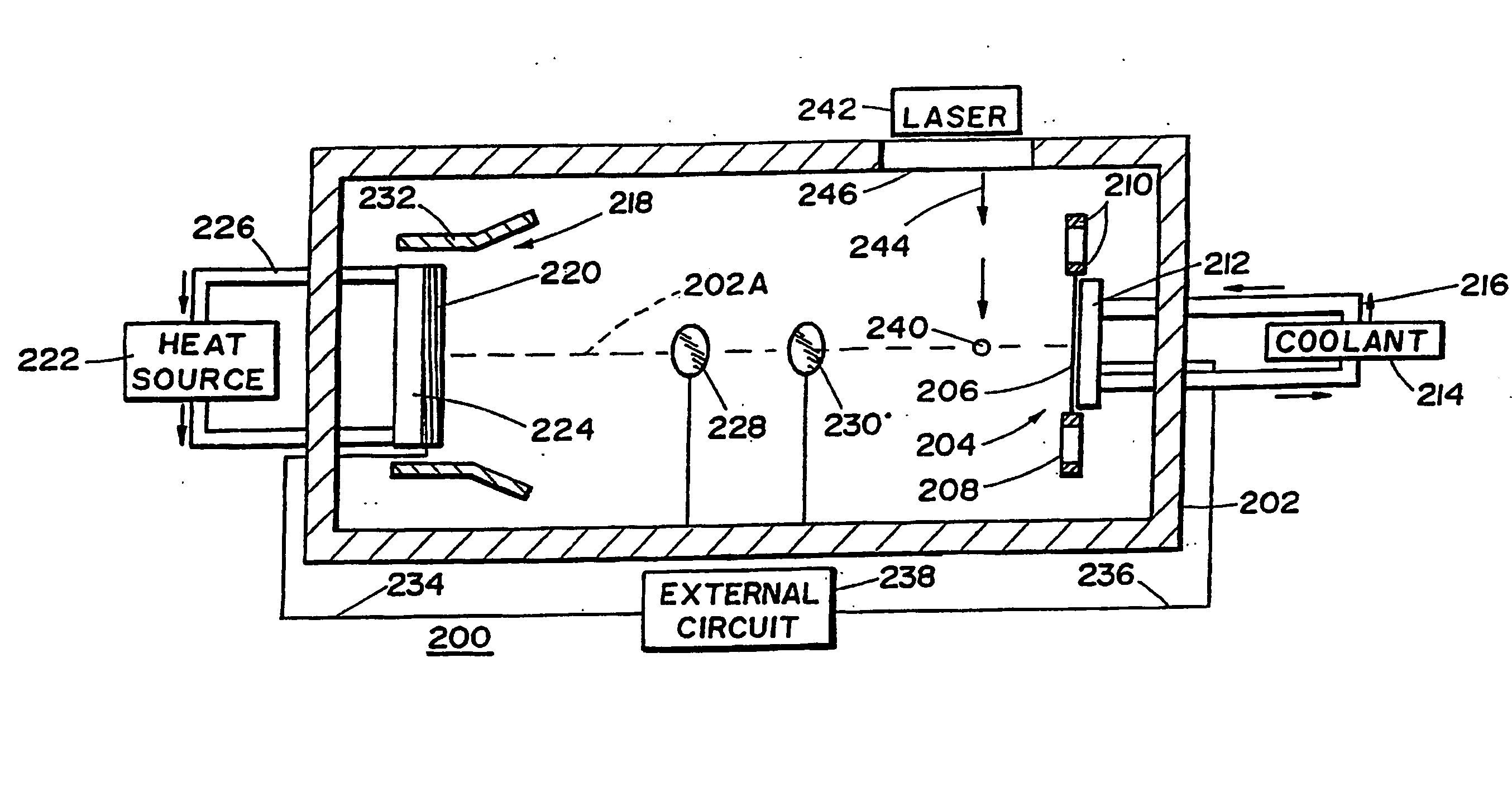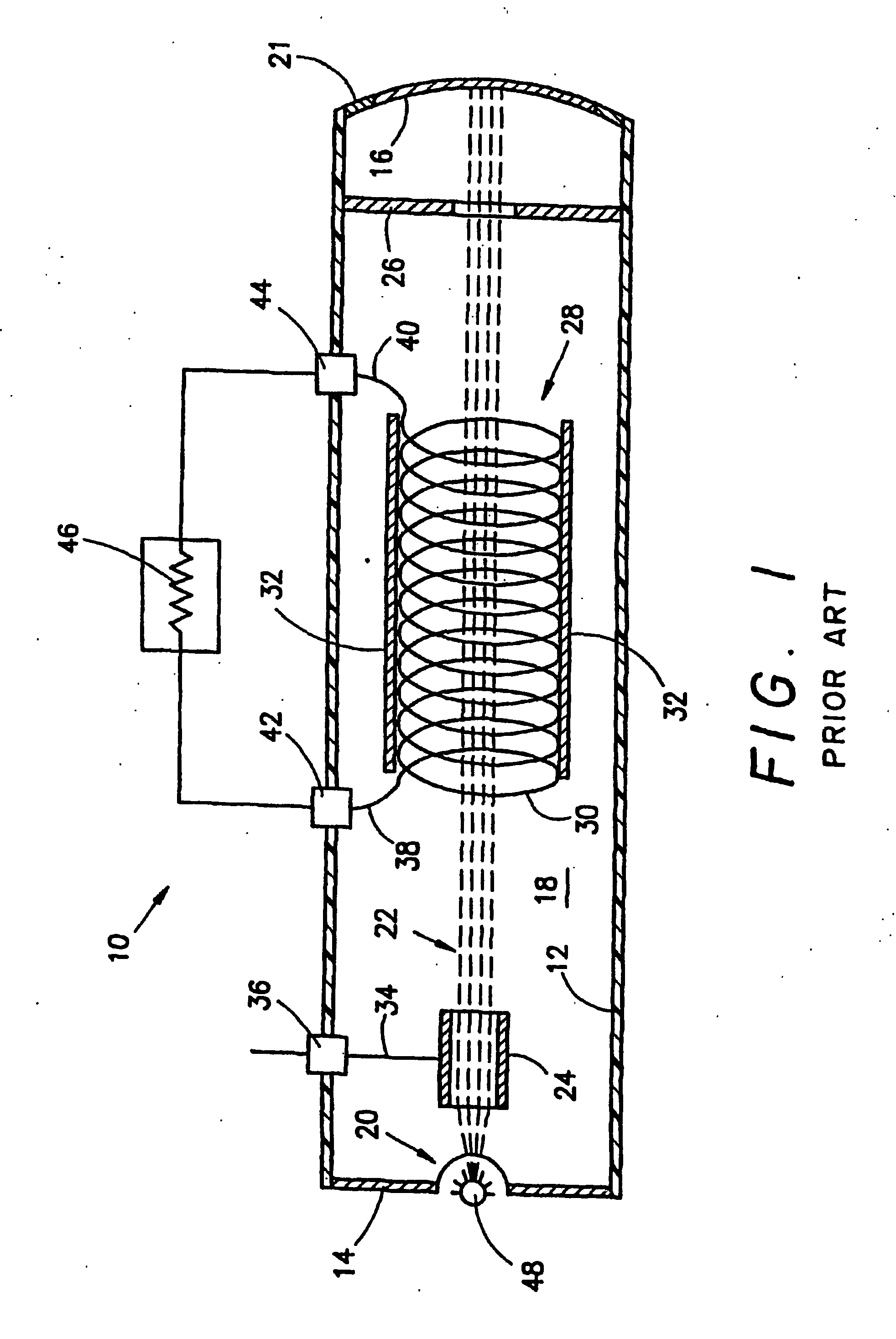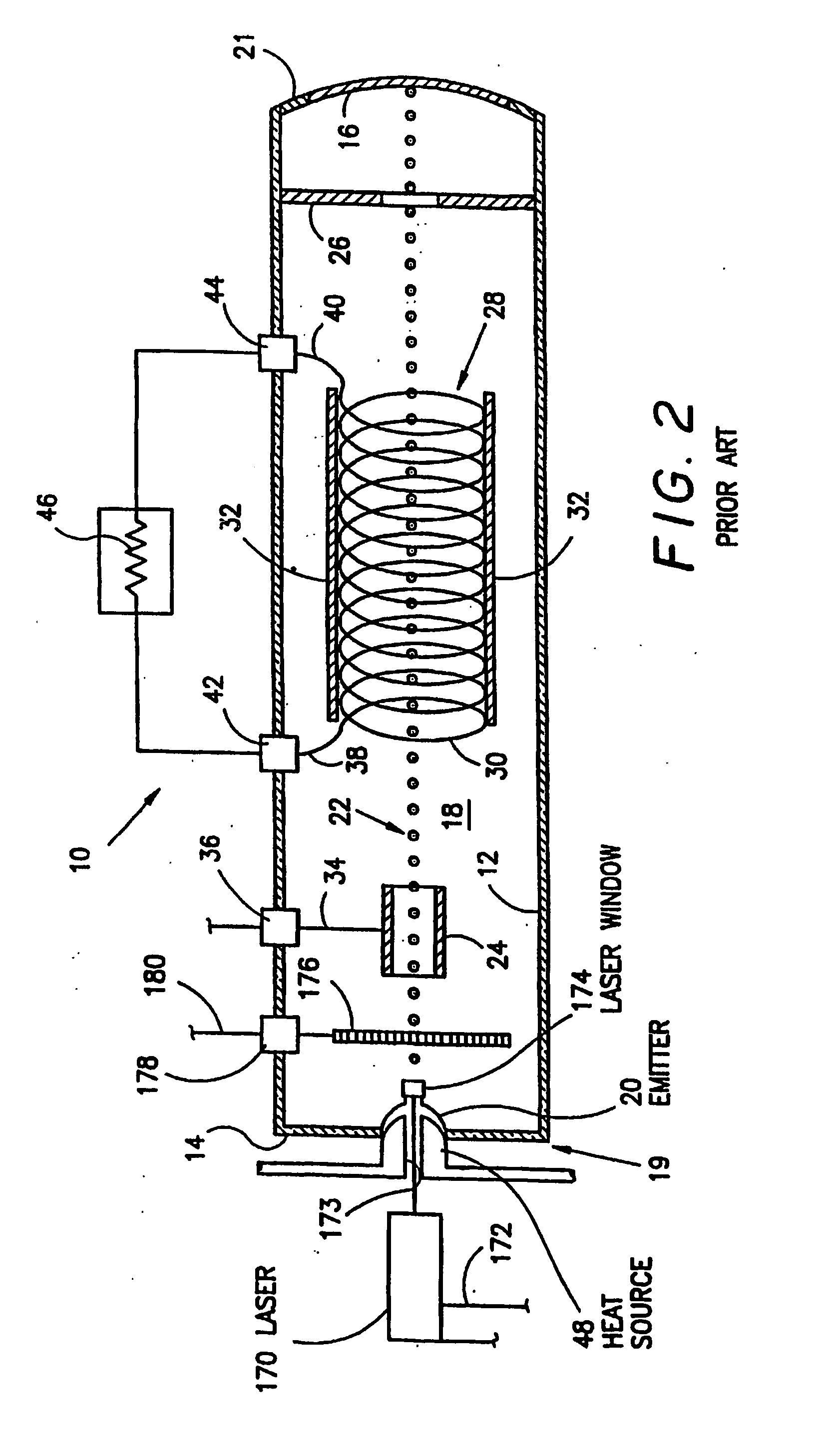Thermionic electric converter
- Summary
- Abstract
- Description
- Claims
- Application Information
AI Technical Summary
Benefits of technology
Problems solved by technology
Method used
Image
Examples
Embodiment Construction
[0031]FIGS. 1 and 2 show prior art thermionic electric converters as shown and described in U.S. Pat. Nos. 4,303,845 and 4,323,808, respectively, both to Edwin D. Davis, the inventor of the present invention, the disclosures of which are incorporated by reference herein in their entirety. While the operation of both thermionic converters is described in detail in the incorporated patents, a general operational overview is presented herein with reference to FIGS. 1 and 2. This may provide background useful in understanding the present invention.
[0032]FIG. 1 shows a basic thermionic electric converter. FIG. 2 shows a laser-excited thermionic converter. The operation of both converters is very similar.
[0033] With reference to the figures, a basic thermionic electric converter 10 is shown. The converter 10 has an elongated, cylindrically shaped outer housing 12 fitted with a pair of end walls 14 and 16, thereby forming a closed chamber 18. The housing 12 is made of any of a number of ...
PUM
 Login to View More
Login to View More Abstract
Description
Claims
Application Information
 Login to View More
Login to View More - R&D
- Intellectual Property
- Life Sciences
- Materials
- Tech Scout
- Unparalleled Data Quality
- Higher Quality Content
- 60% Fewer Hallucinations
Browse by: Latest US Patents, China's latest patents, Technical Efficacy Thesaurus, Application Domain, Technology Topic, Popular Technical Reports.
© 2025 PatSnap. All rights reserved.Legal|Privacy policy|Modern Slavery Act Transparency Statement|Sitemap|About US| Contact US: help@patsnap.com



